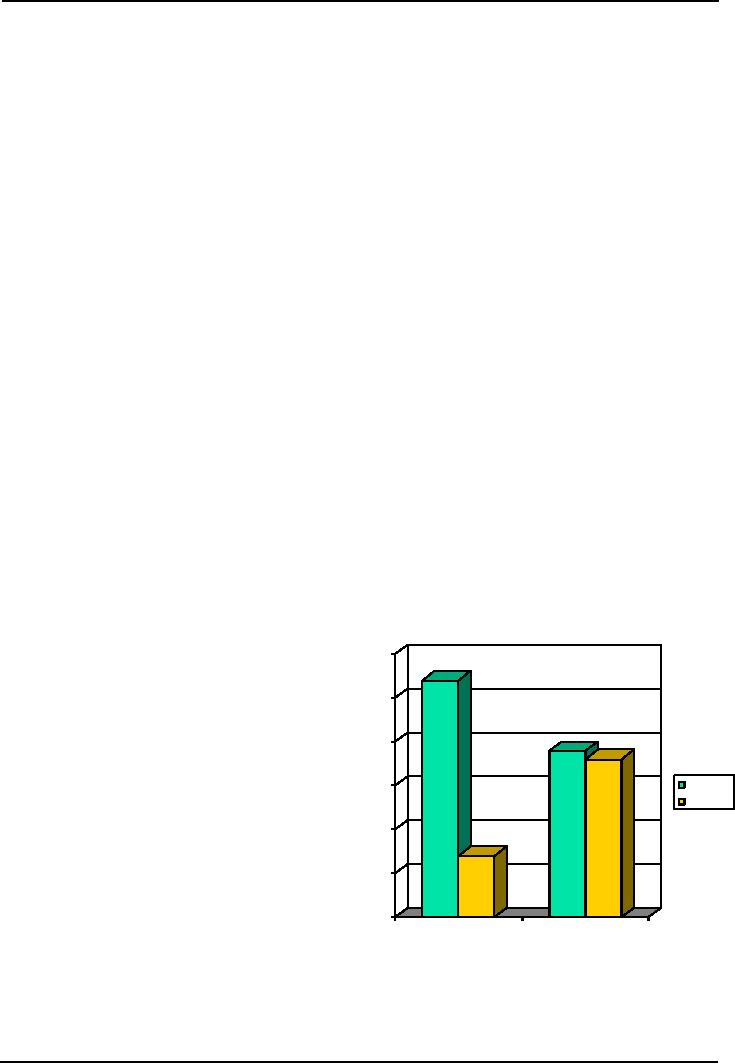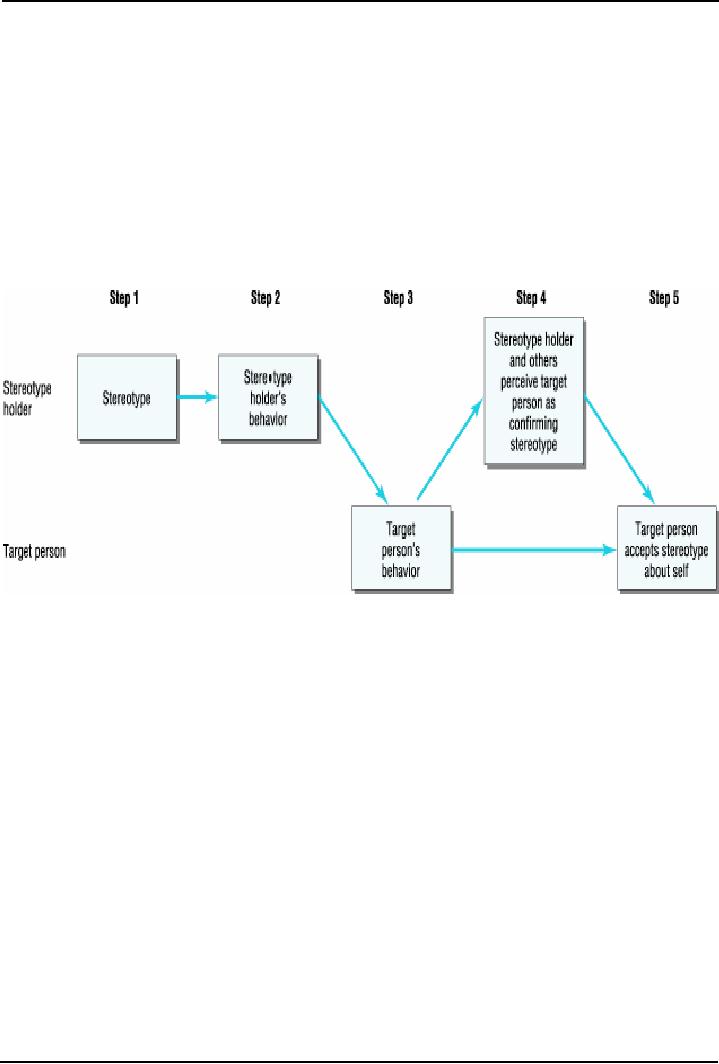 |

Social
Psychology (PSY403)
VU
Lesson
26
PREJUDICE
AND DISCRIMINATION
(CONTINUE..........)
SOCIAL
INEQUALITIES: UNEQUAL
STATUS
This
lecture will discuss that
what social conditions breed
prejudice? How does society
maintain
prejudice?
�
Prejudice
springs from several factors because it
serves many functions: it
may gain us social
acceptance;
it may protects from
anxiety; may bring us pleasure;
can protect our self-esteem,
etc.
�
Prejudice
has been greatest in regions where
slavery was practiced
�
Nineteenth
century European politicians and writers
justified imperial expansion by
describing
exploited
colonized people as "inferior",
"requiring protection" and a "burden" to
be borne
(Allport,
1958, pp. 204-205).
Social
inequalities: Religion
Religious
ideology is well suited to reduce
prejudice. All religions stress
equality and justice,
particularly
Islam places a great emphasis on
Heqooqul Aabad and rights of
neighbours. Moreover,
all
prophets
have been declared equal and it
has been mentioned in
Al-Quran that no prophet has
a
preference
over others. On Hejatul widah, Prophet
Mohammad presented a universal charter of
human
rights
and clearly stated that no one is
superior on the basis of race or
colour.
Although
some religious beliefs can
reduce prejudice, strong religious
beliefs tend to be associated
with
prejudice
shown in a review of 34 studies and in a
survey of 1799 people (Batson &
Ventis, 1982;
Eisinga
et al., 1990).
Although
intrinsically religious prove
less prejudiced on questionnaires but
appear to be equally
prejudiced
when measured behaviorally (Batson et
al., 1978)
"We
have just enough religion to
make us hate but not
enough to make us love one
another"
Social
inequalities: Stereotype
threat
30
A
self-confirming apprehension that one
will be
evaluated
based on a negative stereotype
25
Experiments
by Spencer & Quinn
(1999):
Researchers
administered a difficult Math
test
20
to
men and women with different
instructions.
They
actually divided the test
into two halves
Men
15
but
presented it as two distinct
tests. By
Women
employing
a cross-over design, half of the
10
participants
were told that the first
test was on
which
men outperformed women,
while on the
5
second
there was no gender difference.
Instructions
for the second
group were
reversed.
The results showed the
impact of
0
Gender
difference
No
gender difference
stereotype
threat on performance of men
and
women.
It can be seen clearly in the
graph
presented
Figure
1: Stereotype threat and
gender performance
Stereotype
threat & Self-fulfilling
prophecy
�
Stereotype threat
is different from self-fulfilling
prophecy, which hammers
one's reputation into
101

Social
Psychology (PSY403)
VU
one's
self concept, whereas stereotype threat
situation is immediate. However, gender
and racial
stereotypes
can also be
self-fulfilling.
�
Racial
stereotypes be similarly self-fulfilling,
e.g., when difficult verbal
tests were administered to
Blacks
and Whites (Steele & Aronson, 1995),
Black performed poorly
because they are
perceived
as
having low verbal
ability.
�
Stereotype
threat also affects athletic performance,
When a golf test was
framed as a test of
"sports
intelligence"
Blacks performed worse; when it
was framed as "natural
athletic ability"
Blacks
performed
better than Whites (Stone et
al., 1999).
�
Figure
2 presents a diagrammatic illustration of
stereotypes as self-fulfilling
prophecy.
Figure
2: Stereotypes as Self-fulfilling
Prophecies
Knowing
that one may be stereotyped by others
can create a self-fulfilling
prophecy.
Others'
behavior can influence the
target, and mere expectation of
being stereotyped can create
stereotype
threat.
Social
sources: Social
Identity
Human
beings are group-bound species;
our ancestral history
prepares us to feed and
protect ourselves-
to
live in groups. Human beings live
for their groups, kill for
their groups, and die for
their groups.
We
carry social identities-being woman,
Pakistani, a psychologist, educationist,
student, a member of
Rotary
club, etc.
Any
situation may involve both
interpersonal and intergroup elements,
but usually one will be
dominant.
An
in-group member is someone
who shares category membership
with the perceiver.
An
out-group member is someone
who does not share
category membership with the
perceiver.
Self-concept
contains not just a personal identity
but a social identity.
Simple
act of categorizing people as
in-group or out-group members affects
how we evaluate and
compare
them
102

Social
Psychology (PSY403)
VU
In-group
bias refers to the tendency to give more
favourable evaluations and greater
rewards to in-group
members
than to out-group
ones.
Racism
and sexism are the widespread category-based
prejudice and discrimination
Social
Identity: Self-concept
The
minimal group paradigm:
(Tajfel
et
al.,
1971)
Social
Identity: Self-concept
Group
membership is sufficient to
foster
group favouritism
Participants
allocated to
two
Self
concept
groups
on an arbitrary basis
Identities
of people in other
groups
unknown
Social
Personal
identities
identities
Allocate
money to people (via
Daughter
Roommate Class-fellow
Pakistani
Muslim Rotarian
code
numbers) in the two groups
etc.
etc.
Could
not allocate money to
self
Results
A
persistent tendency to allocate more points to
their own group than the
out-group.
Mere
categorization is sufficient to elicit
intergroup bias. Minimal group
categorizatization is an
independent
of stereotyping and existed even though
people did not know
each other before
this
experiment.
Meaningless
categories; no interaction between groups; no past
relationship; (i.e., even
without
historical,
cultural, or religious
bases)
Has
been proved as a very robust
finding (Brewer,
1979)
Billig
& Tajfel's study
(1973)
�
Original
MGP categorization on basis of
`liking of paintings'
so
not truly mere
categorization,
but
belief similarity, which can
increase discrimination
�
Categorization
by coin-toss (truly minimal) vs.
similarity (you all liked
the same paintings)
�
But...mere
categorization (on completely
arbitrary basis) can still
lead to bias
�
Reward
allocations to either ingroup or
outgroup: more to ingroup
�
How
to explain the mere categorization
effect?
Social
Identity Theory
Our
self esteem is partly
determined by the social esteem of
our group as social identity
is part of our self
definition,
and we enjoy in the reflected glory of
our group.
Tajfel
& Turner (1979)
People
seek to enhance their self
esteem by identifying with
specific social groups and perceiving
these
groups
as being better than
others.
103

Social
Psychology (PSY403)
VU
We
indulge in ingroup biases
when the social esteem of
our ingroup is threatened; strength
of
identification
indicates levels of bias
Intergroup
Competition: Realistic Group Conflict
Theory
Intergroup
conflict develops due to competition for
scarce resources (Levine &
Campbell, 1972).
Two
important changes occur in
conflict:
Increased
hostility toward the opposing
out-group
An
intensification of in-group loyalty
(ethnocentrism)
Sherif
et al.'s summer camp
(robber's cave) experiments
(1955)
What
happens if you randomly place
people into one of two groups and
manipulate circumstances to
promote
intergroup competition? The
central theme of minimal
group categorization surrounds a
classic
study.
Sherif et al. conducted study at a
specially created 200-acre camp at
Robber's Cave State Park,
150
miles
southeast of Oklahoma City of
USA.
Boy's
summer camp in U.S.
20
well-adjusted, 11-12 years
old boys
Divided
into two groups
Unobtrusive
observations by campus counsellors.
Three
phases:
Creating
ingroups
Instilling
intergroup competitions
Encouraging
intergroup cooperation
Phase
I: Creating in-groups
Cooperative
activities: By making meals,
hiking, hunting for hidden
treasures, pitching tents,
etc.
Developed
unique identity (Rattlers & Eagles): Rattlers
established a tough-guy group norm and
spent a
great
deal of time in cursing and
swearing.
Started
making clear and undeniable
ingroup-outgroup statements
Phase
II: Intergroup competitions
Hypothesis:
"Intergroup competition would
cause prejudice"
�
Weeklong
tournament consisting on 10 athletic
events
�
Each
event winner received points
and the group with most
points would receive highly
prized
medals
and impressive 4-bladed
pocketknives.
�
Showed
how easily hostility can be
developed between groups who are
brought in competition.
�
Eagles
were losing, so they angrily
burned Rattlers' flag; Rattlers
raided Eagles' camps and
ripped
their
mosquito nets, overturned
their cots; next day
Eagles returned the attack.
�
Intergroup
conflicts transformed these normal,
well adjusted boys into "wicked,
disturbed, and
vicious"
youngsters" (Sherif, 1966, p.
58).
�
Dramatic
increase in derogation of the other
group (pig, stinkers, sneaky,
cheater) vs.
different
104

Social
Psychology (PSY403)
VU
words
for ingroup members (brave,
tough, friendly, etc.)
�
One
by-product of intergroup hostility
was an increase in in-group
solidarity
�
Intergroup
hostility escalated from
name calling to acts of
physical aggression
Phase
III: Reversing the
hostility
Researchers
sought to determine whether simple
noncompetitive contact between the groups would
ease
tensions,
so they brought children
together for meals and
movie.
Both
groups used each interaction as an
opportunity to merely increase
their animosity
Conflict
reduction: Super ordinate
goals
An
excellent example of how ethnocentrism
can develop when 2 groups
compete for scarce
resources:
Bus
breakdown - at lunchtime
Only
together could the two groups
push-start the truck
Decrease
in out-group derogation
�
But.can
merely being a member of a
certain group promote
intergroup bias?
�
Recent
studies show that mere
perception of conflict is often
sufficient to fuel intolerance
(Zarate
et
al., 2004); Realistic group
conflict theory
Reading
�
Franzoi,
S. (2003). Social Psychology.
Boston: McGraw-Hill. Chapter 8.
Other
Readings
�
Lord,
C.G. (1997). Social
Psychology. Orlando: Harcourt
Brace and Company.
�
David
G. Myers, D. G. (2002). Social
Psychology (7th ed.). New
York: McGraw-Hill.
105
Table of Contents:
- INTRODUCTION TO SOCIAL PSYCHOLOGY:Readings, Main Elements of Definitions
- INTRODUCTION TO SOCIAL PSYCHOLOGY:Social Psychology and Sociology
- CONDUCTING RESEARCH IN SOCIAL PSYCHOLOGY:Scientific Method
- CONDUCTING RESEARCH IN SOCIAL PSYCHOLOGY:Evaluate Ethics
- CONDUCTING RESEARCH IN SOCIAL PSYCHOLOGY RESEARCH PROCESS, DESIGNS AND METHODS (CONTINUED)
- CONDUCTING RESEARCH IN SOCIAL PSYCHOLOGY OBSERVATIONAL METHOD
- CONDUCTING RESEARCH IN SOCIAL PSYCHOLOGY CORRELATIONAL METHOD:
- CONDUCTING RESEARCH IN SOCIAL PSYCHOLOGY EXPERIMENTAL METHOD
- THE SELF:Meta Analysis, THE INTERNET, BRAIN-IMAGING TECHNIQUES
- THE SELF (CONTINUED):Development of Self awareness, SELF REGULATION
- THE SELF (CONTINUE…….):Journal Activity, POSSIBLE HISTORICAL EFFECTS
- THE SELF (CONTINUE……….):SELF-SCHEMAS, SELF-COMPLEXITY
- PERSON PERCEPTION:Impression Formation, Facial Expressions
- PERSON PERCEPTION (CONTINUE…..):GENDER SOCIALIZATION, Integrating Impressions
- PERSON PERCEPTION: WHEN PERSON PERCEPTION IS MOST CHALLENGING
- ATTRIBUTION:The locus of causality, Stability & Controllability
- ATTRIBUTION ERRORS:Biases in Attribution, Cultural differences
- SOCIAL COGNITION:We are categorizing creatures, Developing Schemas
- SOCIAL COGNITION (CONTINUE…….):Counterfactual Thinking, Confirmation bias
- ATTITUDES:Affective component, Behavioral component, Cognitive component
- ATTITUDE FORMATION:Classical conditioning, Subliminal conditioning
- ATTITUDE AND BEHAVIOR:Theory of planned behavior, Attitude strength
- ATTITUDE CHANGE:Factors affecting dissonance, Likeability
- ATTITUDE CHANGE (CONTINUE……….):Attitudinal Inoculation, Audience Variables
- PREJUDICE AND DISCRIMINATION:Activity on Cognitive Dissonance, Categorization
- PREJUDICE AND DISCRIMINATION (CONTINUE……….):Religion, Stereotype threat
- REDUCING PREJUDICE AND DISCRIMINATION:The contact hypothesis
- INTERPERSONAL ATTRACTION:Reasons for affiliation, Theory of Social exchange
- INTERPERSONAL ATTRACTION (CONTINUE……..):Physical attractiveness
- INTIMATE RELATIONSHIPS:Applied Social Psychology Lab
- SOCIAL INFLUENCE:Attachment styles & Friendship, SOCIAL INTERACTIONS
- SOCIAL INFLUENCE (CONTINE………):Normative influence, Informational influence
- SOCIAL INFLUENCE (CONTINUE……):Crimes of Obedience, Predictions
- AGGRESSION:Identifying Aggression, Instrumental aggression
- AGGRESSION (CONTINUE……):The Cognitive-Neo-associationist Model
- REDUCING AGGRESSION:Punishment, Incompatible response strategy
- PROSOCIAL BEHAVIOR:Types of Helping, Reciprocal helping, Norm of responsibility
- PROSOCIAL BEHAVIOR (CONTINUE………):Bystander Intervention, Diffusion of responsibility
- GROUP BEHAVIOR:Applied Social Psychology Lab, Basic Features of Groups
- GROUP BEHAVIOR (CONTINUE…………):Social Loafing, Deindividuation
- up Decision GROUP BEHAVIOR (CONTINUE……….):GroProcess, Group Polarization
- INTERPERSONAL POWER: LEADERSHIP, The Situational Perspective, Information power
- SOCIAL PSYCHOLOGY APPLIED: SOCIAL PSYCHOLOGY IN COURT
- SOCIAL PSYCHOLOGY APPLIED: SOCIAL PSYCHOLOGY IN CLINIC
- FINAL REVIEW:Social Psychology and related fields, History, Social cognition